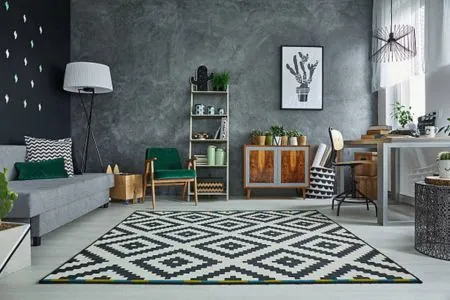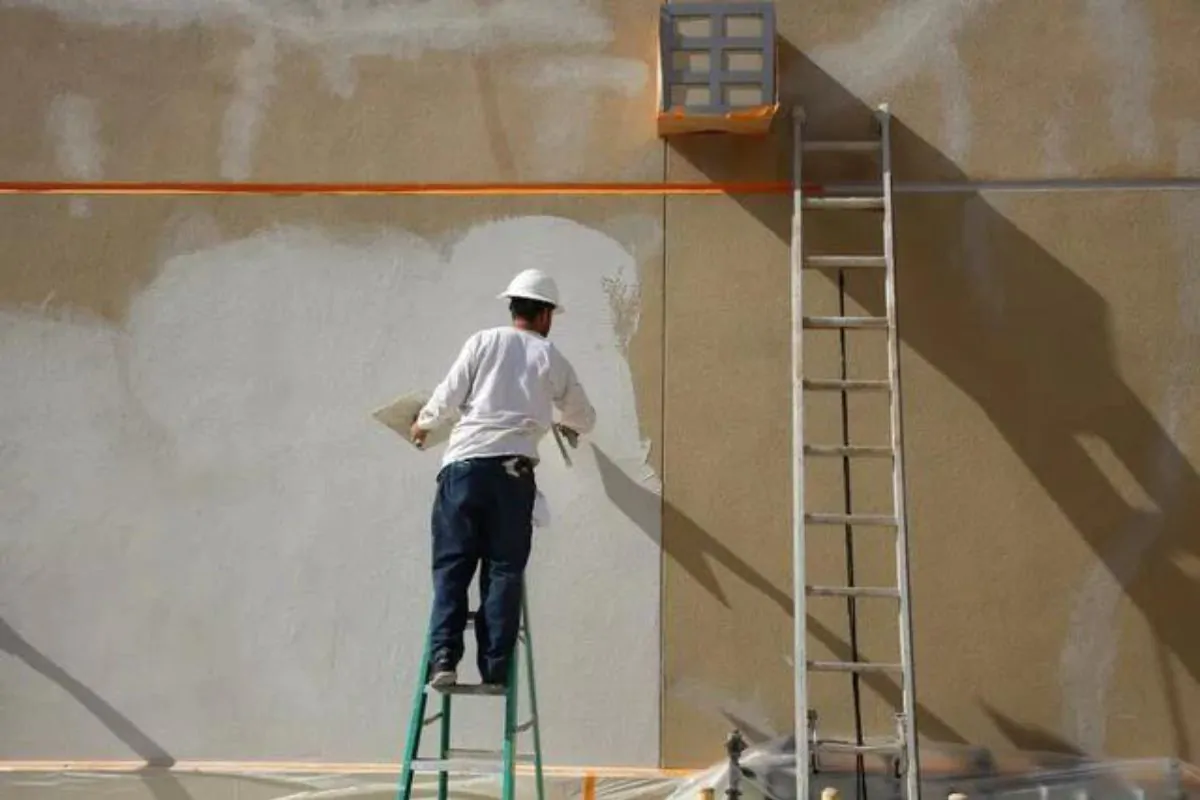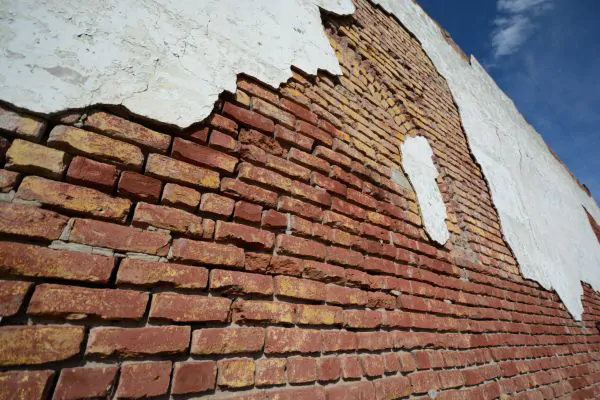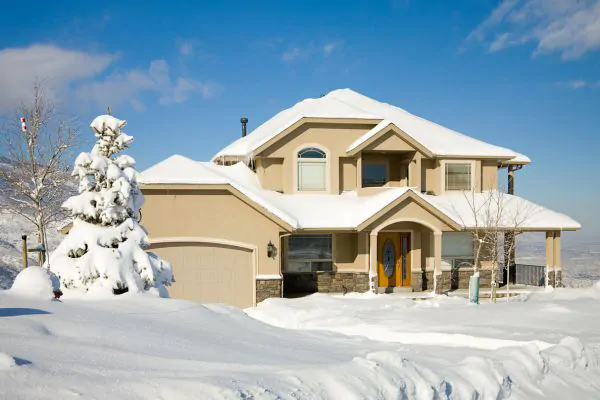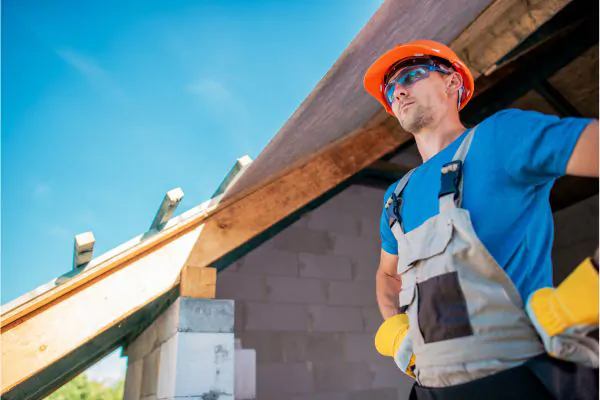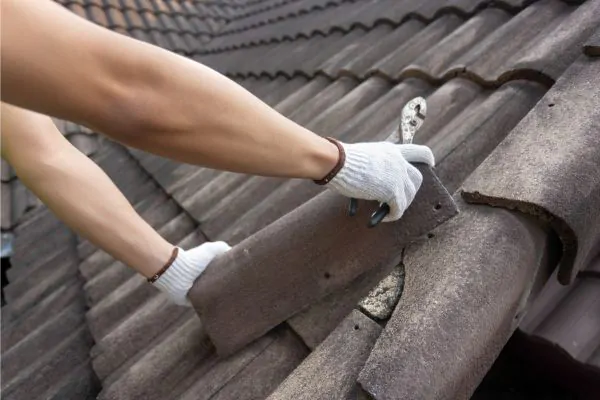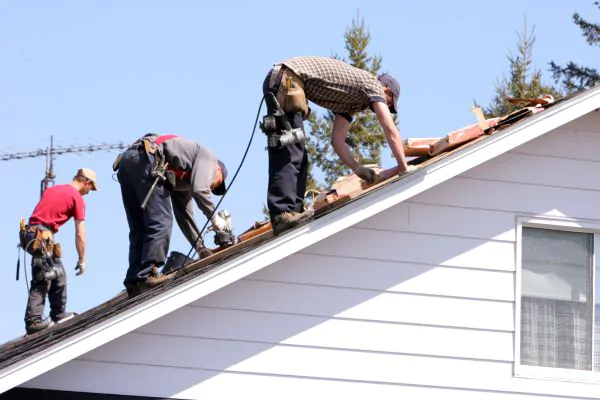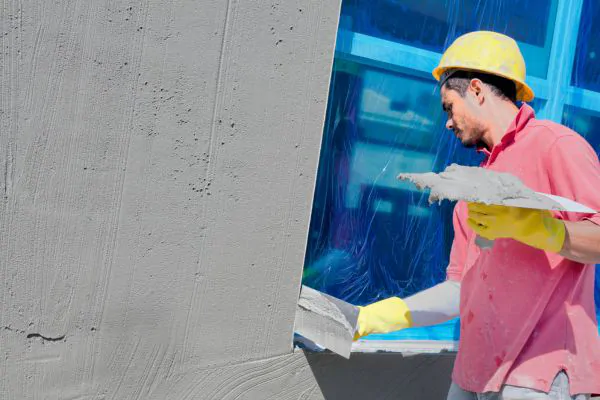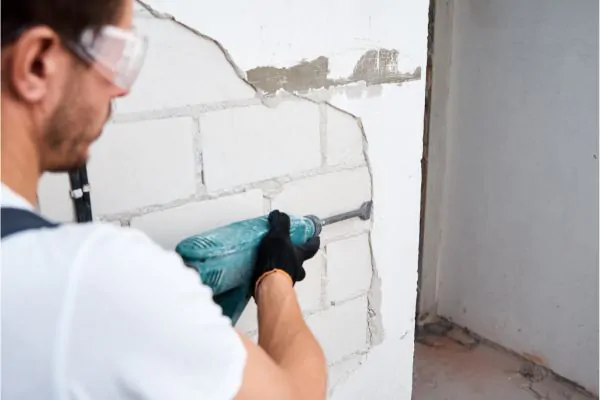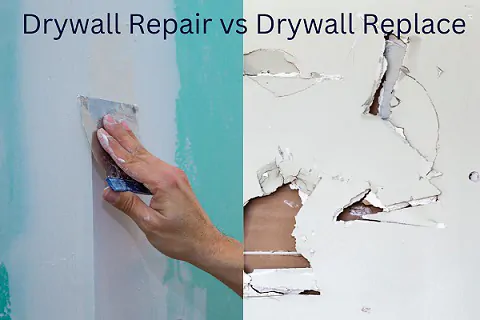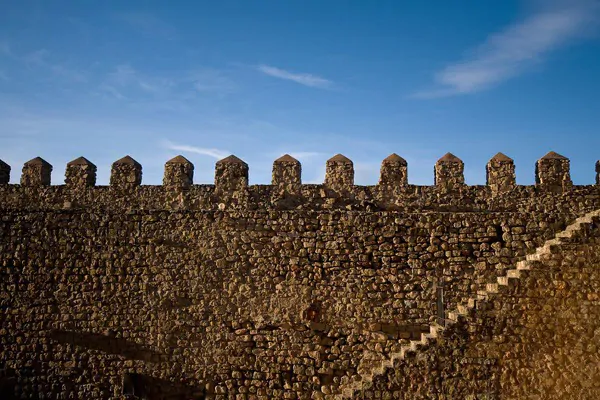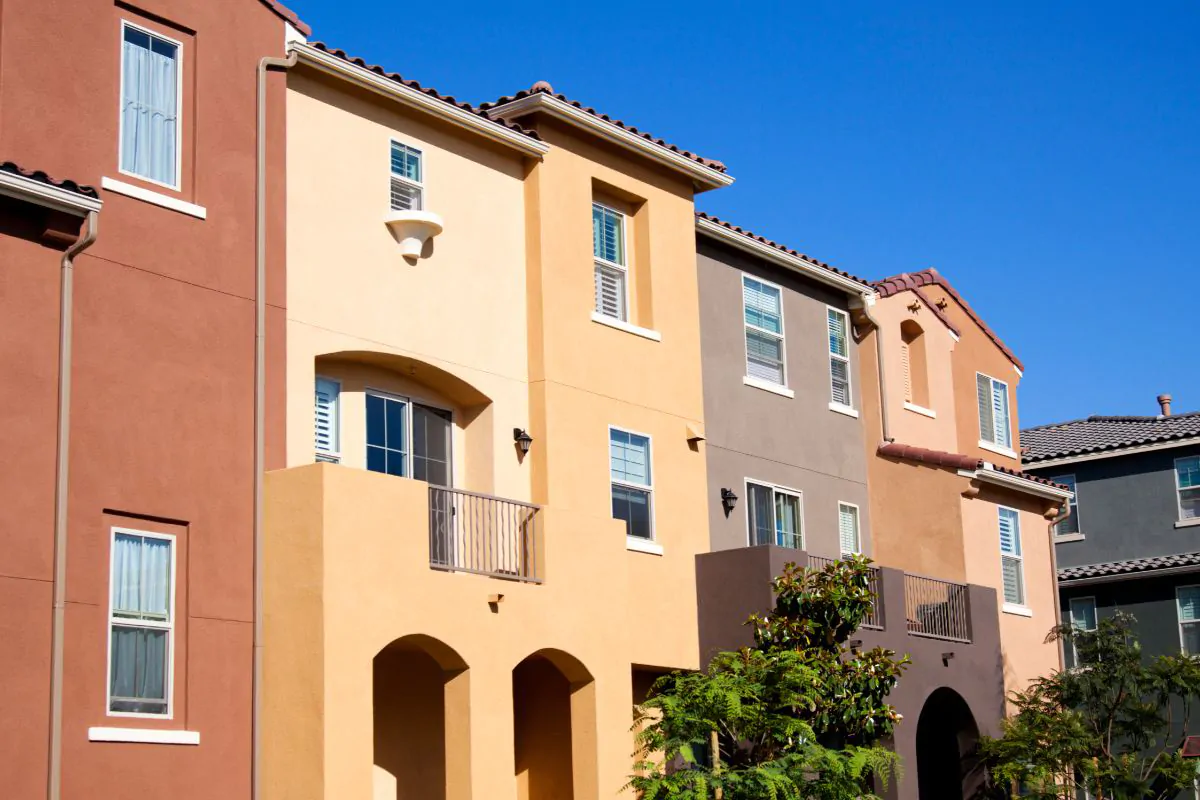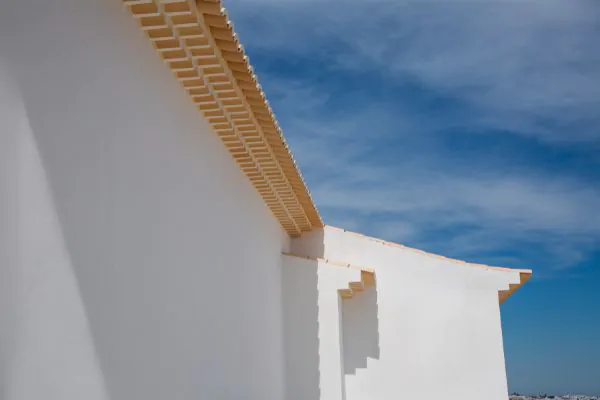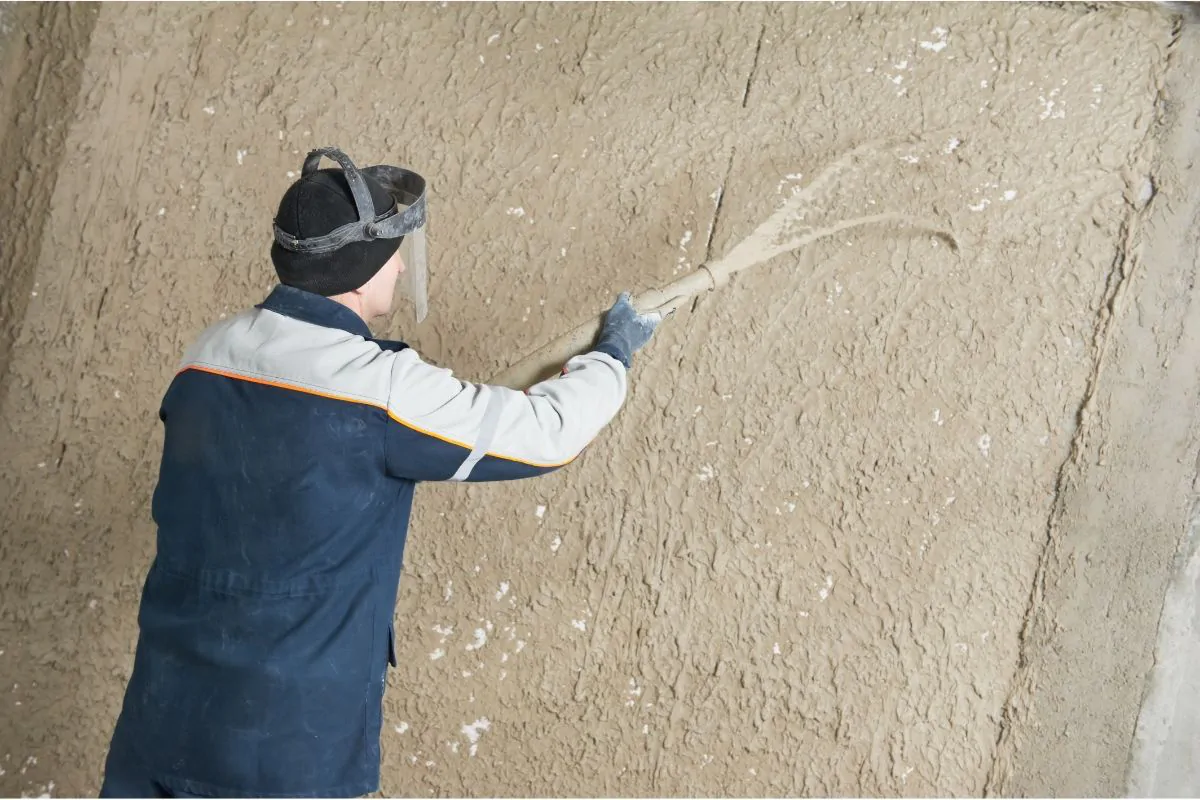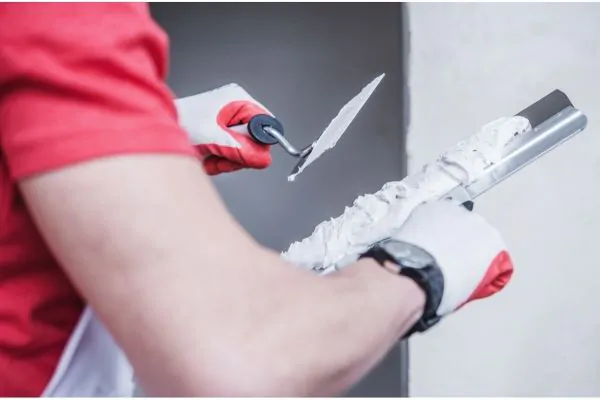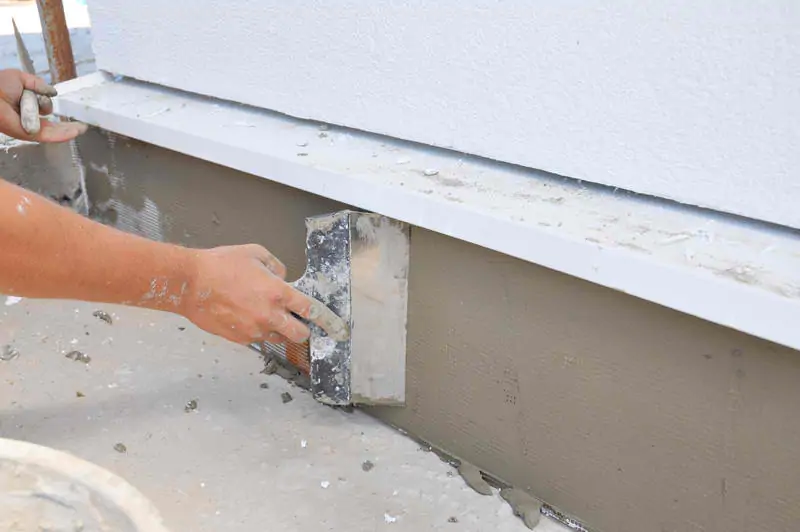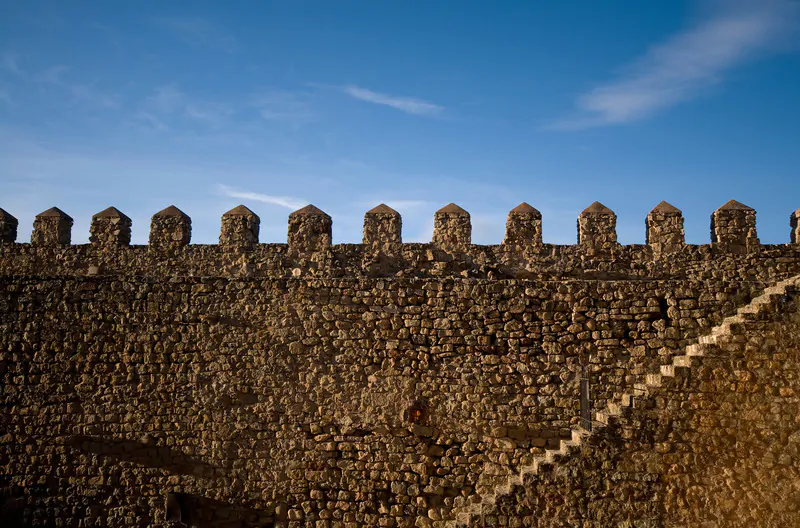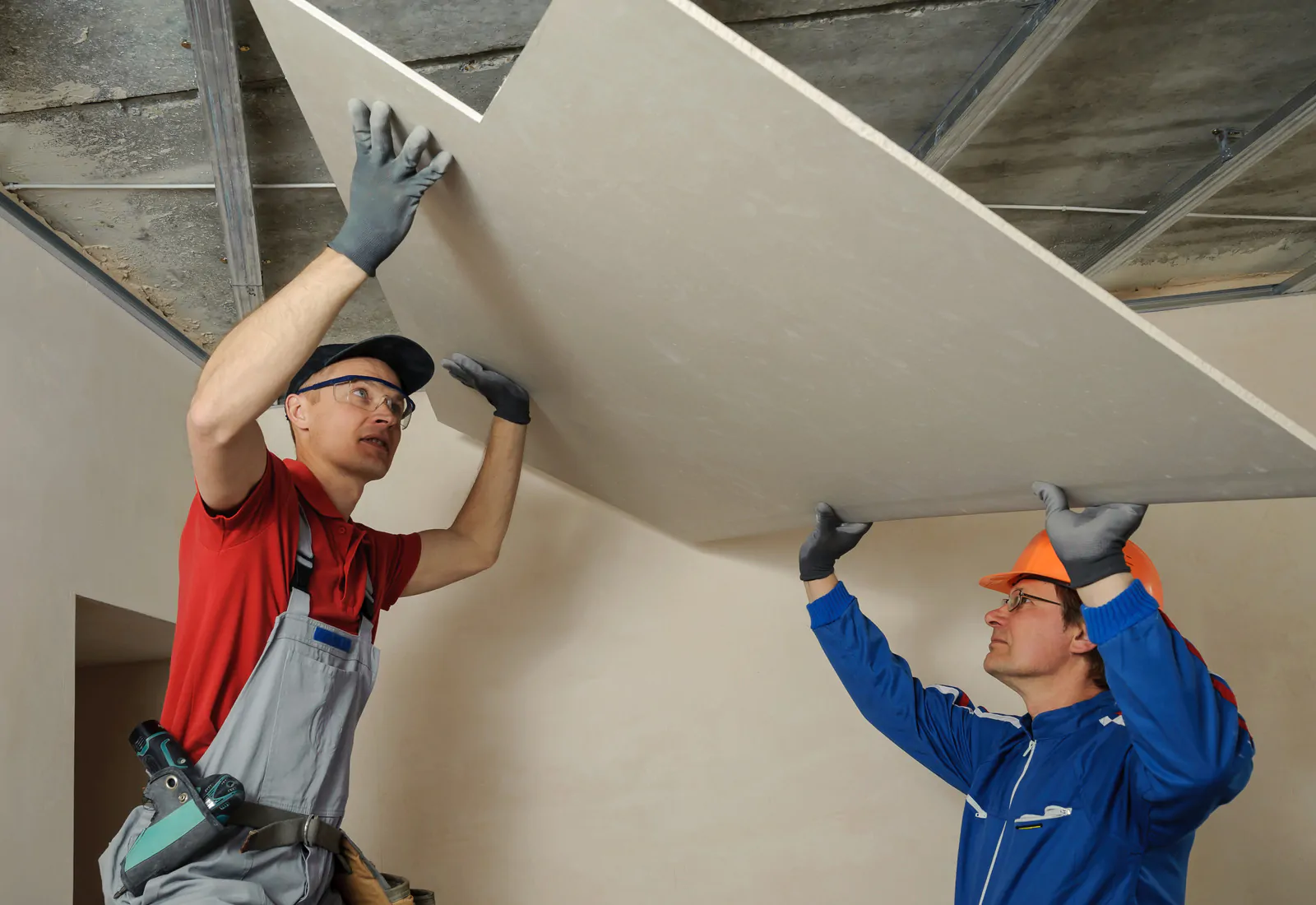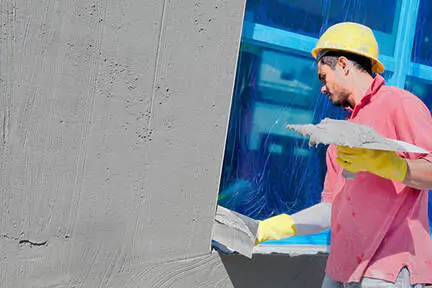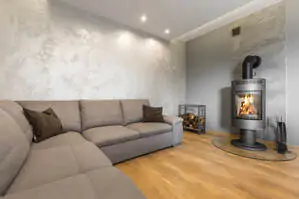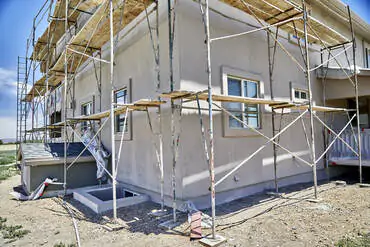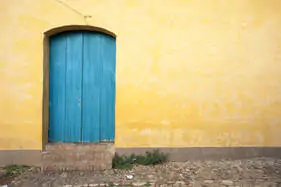
Stucco has long been a trusted ally in construction and design, known for its durability and versatile finishes. From the nuances of the types of stucco texture to the challenge of patching them, choosing and then applying the perfect finish is an art. Understanding these components is vital to achieving the desired effect.
I. Overview of Stucco Texture
The allure of stucco as a finish for home exteriors has held steady throughout the years.
Stucco, with its capacity to withstand the test of time and the elements, offers a blend of durability and aesthetic appeal.
Made from a mix of cement, water, and other materials, stucco is applied over a supportive wire mesh called lath, creating a robust shield for homes.
Its versatility allows it to be molded into various textures. Once cured, it provides an excellent surface for paint. This results in many design possibilities that enhance the architecture of any residence.
A. Benefits of stucco in home exteriors
Stucco stands out as a top choice for home exteriors due to its multifaceted layer of protection and charm. When the plaster base is applied with a trowel, it becomes a delicate lace pattern or presents a smooth coat. At this point, it is ready to bond with acrylic paint for a long-lasting finish. This resilience and ease of maintenance make stucco a favored material among homeowners and builders alike.
II. Explore Popular Stucco Textures
The stucco texture types play a pivotal role in both waterproofing and enhancing the aesthetics of a building. The right texture adds depth and character while blending easily with a home’s color scheme and roofing style.
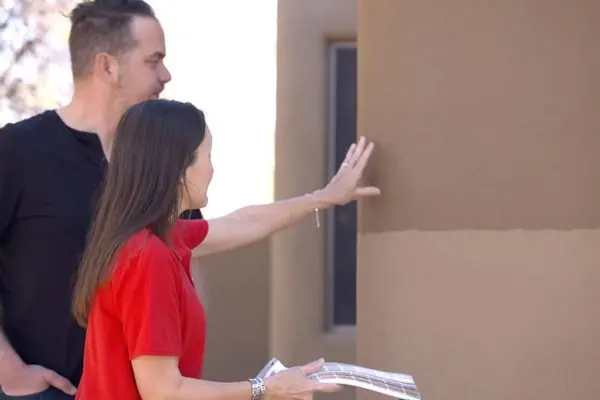
Each stucco finish, from the classic sand texture to the intricate Spanish lace, brings a unique flair to the structure’s surface.
Builders and homeowners choose a texture based on building design, climate, and construction methods. The smooth Santa Barbara finish or the textured worm style provides unique ways to protect and decorate exterior walls.
A. Sand (Float) Stucco Texture
The sand or float stucco texture is a classic choice that appeals to many homeowners for its simple elegance. This finish is made with lime, Portland cement, and sand for a pattern that complements various architectural styles. A skilled hand wields the tool to sweep across the surface lightly. This ensures the texture is evenly distributed for a refined appearance.
B. Cat (California) Stucco Texture
Cat or California stucco texture enhances the home exterior with skilled trowel strokes. They create smooth ridges and troughs. Also, it withstands the environment well and is perfect for exterior painting. The design is beautifully highlighted under protective layers.
C. Dash (Roughcast Style) Texture
The Dash texture, often seen in roughcast style stucco, emerges as a rugged alternative to smoother stucco finishes. Its application involves hurling stucco against the wall. A specially designed technique like this transforms the wall into a canvas. The raw beauty of concrete is presented as a building material. This makes it popular for siding in renovation projects and new constructions.
D. Santa Barbara (Mission Style) Texture
The Santa Barbara texture often associated with the historic charm of mission-style design. It embodies a fine, grainy finish that speaks to refined tastes. Builders create a subtle effect that mimics ancient plastering methods with a thin layer of stucco over a metal or foam. No heavy-handed pressure is used during the process. This will safeguard the integrity of the walls while adhering to a home’s privacy policy.
E. Spanish Lace Texture
The Spanish Lace Texture is reminiscent of a snow-dusted landscape. The stucco artisan achieves a textured yet delicate finish by embedding fine fibers within the mix. This style effortlessly comes with an array of architectural styles. It also offers a customized aesthetic that resists mold and age. This texture demands a handcrafted touch to ensure that each pattern uniquely defines the space it graces.
F. Worm (Putz and Swirl) Texture
The Worm texture is often called the Putz or Swirl texture. This texture blends traditional stucco with modern design trends. It also features swirling patterns that mimic natural movements while enhancing the home’s facade. It incorporates features perfect for projects that merge functionality with art.
III. Custom Stucco Textures

Homeowners and builders can tailor exterior walls with custom designs using modern technology. Many of the above-mentioned stucco finishes can be done to varying degrees of roughness or smoothness. Custom textures for stucco can create a unique and original look and feel for your home. Here are three great options to consider:
A. Smooth Texture
The smooth texture in stucco finishes is a modern take that displays an understated elegance. Achieving a flat and uniform surface minimizes shadows and lines. It creates a clean and contemporary style that is both minimalist and striking. This texture suits homes looking for a modern facade that brings out crisp architectural lines.
B. English Stucco Texture
The English Stucco Texture is an homage to centuries-old cottages and manors’ classy, time-worn appeal. Stucco professionals apply multiple layers of stucco with varying grain sizes. Then expertly score the surface to create a pattern that resembles traditional English masonry. This texture brings an element of historic sophistication to modern homes. It strikes a fine balance between old-world style and present-day durability.
C. Unique designs
Unique designs in stucco offer the freedom to personalize a home’s exterior with creative expressions. Stucco experts produce one-of-a-kind patterns that reflect the homeowner’s style and distinctive character. These personalized stucco finishes turn the walls of a house into a showcase of craftsmanship and personal flair.
IV. Select the Right Stucco Texture for Your Home
Choosing the right stucco texture is more than just picking a pattern. It’s about finding a design that suits the home’s architecture and meets practical considerations.
Homes come in various styles. Each comes with distinct features. The texture of the stucco should complement these characteristics, not clash with them.
A. Match textures to architectural style
The art of choosing the appropriate stucco texture for your home lies in creating harmony with its architectural design. Smooth textures pair well with a modern build. Whereas a textured finish like Spanish Lace could highlight the romantic curves of a Mediterranean villa. The key is for the texture to accentuate the unique features of the building. It ensures that the exterior presentation looks purposeful and cohesive with the home’s inherent style.
B. Consider maintenance and durability
In choosing a stucco texture for a home, it is worth weighing the ease of upkeep against the strength of the material to resist wear and tear over time. Select a texture that looks good and stands firm against climate extremes and requires minimal touch-ups. This guarantees the home remains well-protected and visually appealing for years to come.
V. Why Hiring a Professional Matters for the Right Stucco Texture
The quest for the perfect stucco texture on a home is not just about the materials but the skill and precision of application. This is where hiring a professional becomes key. A seasoned expert brings a wealth of knowledge and a steady hand to ensure that every inch of the home’s exterior is covered with the ideal finish. If you are confused about how to find the right stucco texture for your house, the guidance and expert insights of local professionals can help make the decision more straightforward.
Professionals understand how different textures interact with various climates and architectural styles. They provide valuable advice tailored to a home’s unique needs. This ensures that the chosen texture looks stunning and provides lasting protection.

Attempting to apply stucco without the proper skills can lead to an uneven finish, premature wear, or even structural issues. Homeowners benefit from the help of expert stucco contractors who get the job done right the first time. This helps avoid costly mistakes and extending the lifespan of the stucco exterior.
Conclusion
Stucco combines durability and aesthetics, offering textures that suit any architectural style. A well-chosen stucco texture enhances a home’s appearance while protecting it from the elements.
Choosing the right finish involves balancing maintenance and durability for long-lasting beauty. Professional stucco artisans ensure a flawless finish. They blend expertise to safeguard and effectively beautify homes.
Call today to get started with your own home exterior remodeling project and find the stucco finish and texture that is just right for your home!
